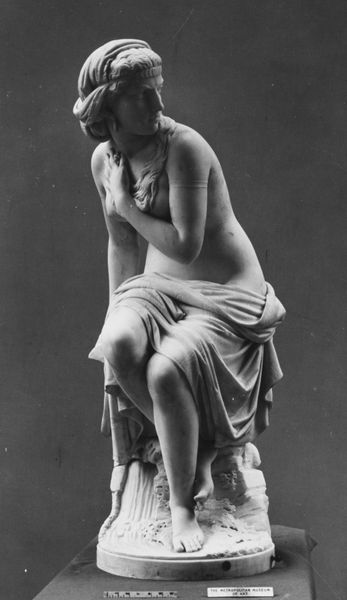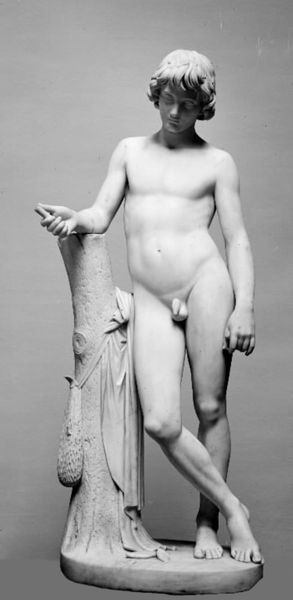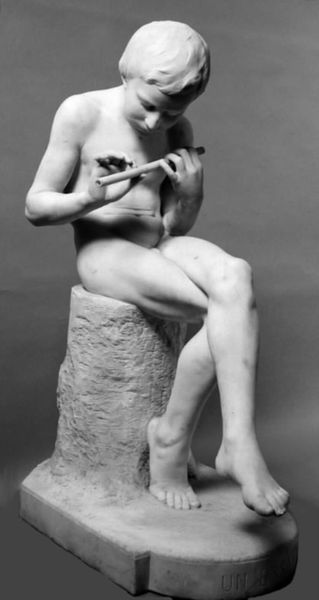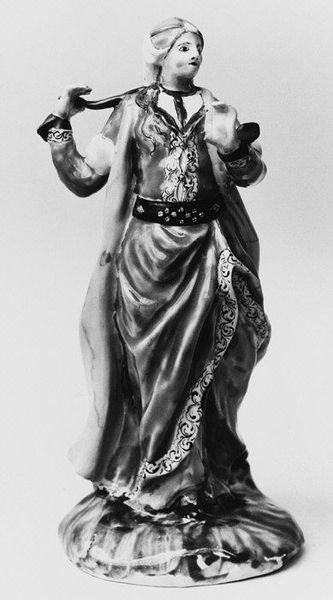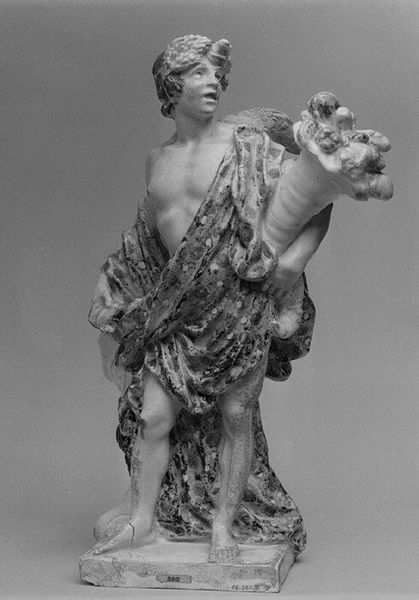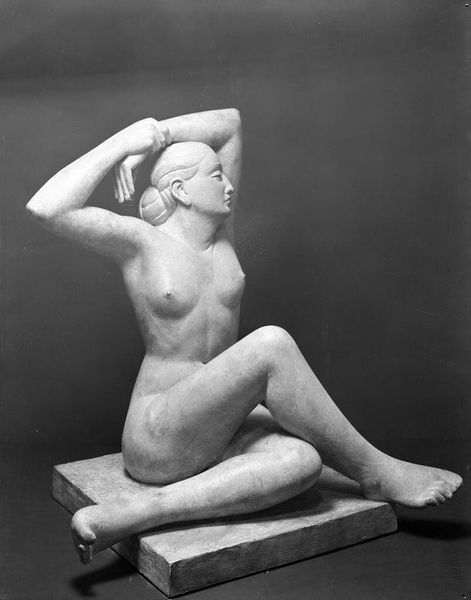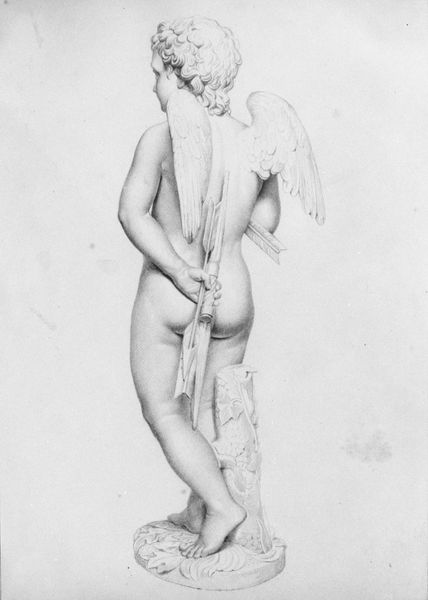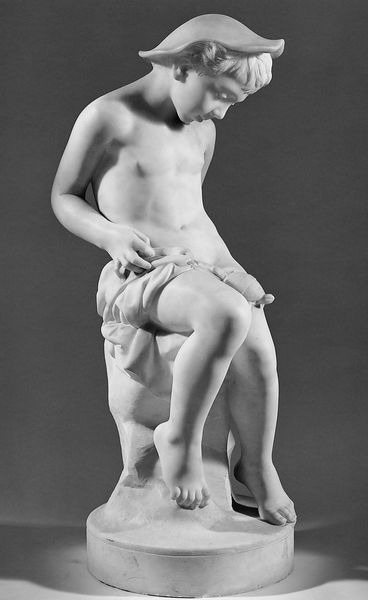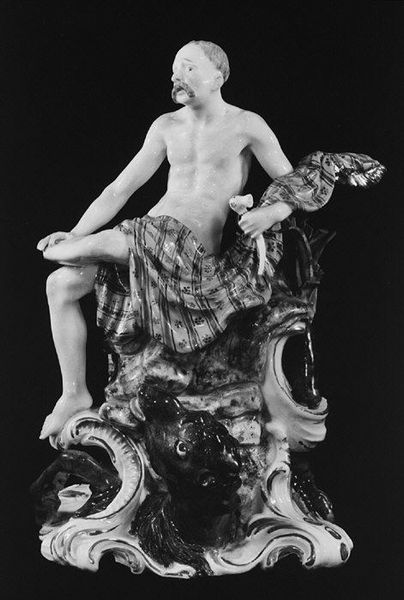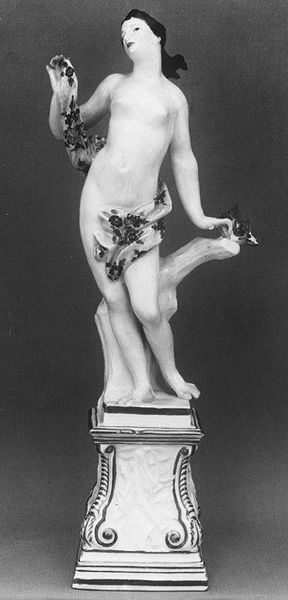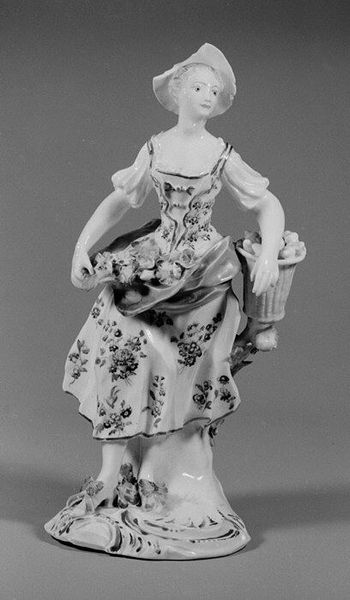
sculpture, marble
#
portrait
#
neoclacissism
#
sculpture
#
classical-realism
#
figuration
#
sculpture
#
decorative-art
#
marble
Dimensions: Height: 45 1/2 in. (115.6 cm)
Copyright: Public Domain
Editor: This beautiful marble sculpture, “The Young St. John the Baptist” created in 1836 by Luigi Bienaimé, shows John as a boy, clutching his iconic staff. What really strikes me is how vulnerable he looks, yet also serene. What significance do you see in the artist’s choices here? Curator: The imagery is layered, isn't it? The staff he holds isn’t merely a prop; it represents the cross and Christ's future. The sheepskin alludes to his later life in the wilderness, yes, but consider the ancient meaning of lambs, or sheep; sacrifice, innocence, followers, flock... And look how his youthful face gazes upwards. How might this image operate within the iconography of repentance and forgiveness? Editor: I guess I hadn't thought about it that deeply. So, beyond the straightforward Christian symbolism, is there something more here? Curator: Bienaimé wasn't just depicting a biblical figure. The sculpture embodies themes present across eras - piety, the call to purpose, but also the idealization of childhood. His very being is in devotion, represented by upward turned eyes. Marble is a telling material choice here; How might the artist want us to receive or project our experience? Editor: So, by portraying John as a youth, it almost makes his eventual path seem predestined. And the hard marble further emphasises John's firmness of purpose and permanence of memory, right? Curator: Precisely. The Neoclassical style adds a sense of timelessness. He exists outside of one singular time. Are the cultural symbols used effective today? Editor: I think understanding those deeper cultural symbols definitely gives a richer appreciation of the work. It is far more complex than I originally thought. Curator: Indeed. Every element serves a purpose, weaving together faith, cultural memory, and the enduring human fascination with purpose. I am left wondering whether this piece intends to offer solace to, or to urge into action?
Comments
No comments
Be the first to comment and join the conversation on the ultimate creative platform.
